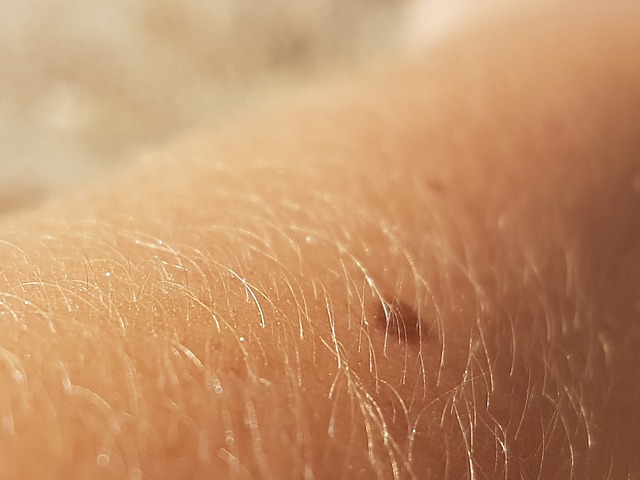Skin tags, benign growths found in various body parts, vary in size and color. People seek Bradford Tag Removal for aesthetic or comfort reasons. Understanding skin tag types is crucial for effective removal. At-home methods like apple cider vinegar or duct tape are popular but require caution. Professional services like Bradford Tag Removal offer quicker results but carry risks of bleeding and scarring. Always consult a healthcare professional for the best approach, especially with larger or sensitive tags.
Considering removing skin tags at home? This comprehensive guide explores effective strategies for Bradford tag removal, focusing on safe practices and natural remedies. From understanding the causes and types of skin tags to comparing surgical vs. at-home methods and preventing recurrence, we’ve got you covered. Learn how to tackle these common skin concerns with confidence using simple household items and discover when professional help might be necessary.
- Understanding Skin Tags: Causes and Types
- Safety First: Precautions Before Removal
- Home Remedies for Effective Tag Disappearance
- Using Common Household Items for Skin Tag Removal
Understanding Skin Tags: Causes and Types
Skin tags, also known as acrochordons, are small, soft skin growths that typically appear on the neck, armpits, and groin areas. They can vary in size, from a few millimeters to over a centimeter, and often resemble small pieces of hanging skin. While they are generally harmless, many individuals seek Bradford Tag Removal for aesthetic reasons or due to discomfort caused by their location.
There are several types of skin tags, with the most common being acral and angioedema tags. Acral tags are typically flesh-colored and can develop anywhere on the body, while angioedema tags are more reddish in color and often appear on the face or neck. Understanding these causes and types is essential when considering at-home removal methods or consulting a professional Bradford Tag Removal service for effective treatment.
Safety First: Precautions Before Removal
Before attempting any skin tag removal at home, it’s crucial to prioritize safety and take necessary precautions. Skin tags are generally harmless, but proper care should be taken to avoid potential infections or complications. One common method, Bradford Tag Removal, involves using a sterile scalpel or scissors to cut off the tag. However, this can lead to bleeding and scarring if not done correctly.
To ensure safety, it’s essential to use clean tools, sterilize the area around the skin tag, and apply pressure with a clean cloth if bleeding occurs. Consulting a healthcare professional before attempting removal is also advisable, especially for larger or sensitive tags. This step can provide guidance on the best approach and mitigate potential risks associated with homemade removal methods.
Home Remedies for Effective Tag Disappearance
Many people opt for home remedies as a preferred method for Bradford tag removal due to their accessibility and cost-effectiveness. One popular natural approach involves using apple cider vinegar, known for its antimicrobial properties. Soaking the affected area in a mixture of equal parts apple cider vinegar and warm water for 15-20 minutes daily can help soften and eventually eliminate skin tags.
Another home remedy gains traction from its supposed ability to stimulate circulation and promote cell turnover. Applying a mixture of garlic juice and tea tree oil topically, with a cotton ball, twice daily may result in reduced skin tag visibility over time. However, it’s important to note that consistency is key when trying these remedies, as results may vary among individuals.
Using Common Household Items for Skin Tag Removal
Many people turn to at-home remedies for skin tag removal, seeking a convenient and cost-effective alternative to professional treatments. One effective method involves using common household items found right in your kitchen or bathroom. For instance, applying apple cider vinegar, known for its natural acidity, can help dissolve the skin tags over time. Soak a cotton ball in the vinegar and gently press it against the tag, securing it with a small bandage to prevent irritation. Repeat this process daily for best results.
Another surprising household item with potential benefits is duct tape. While it may sound unconventional, some individuals report success in removing skin tags by applying a piece of duct tape over the tag and leaving it on for several days. The adhesive can gently pull the tag, causing it to dry out and eventually fall off. However, this method requires caution, as prolonged use or excessive pulling could lead to skin irritation or damage. Always consider the potential risks before trying any at-home removal techniques, especially when dealing with sensitive areas like the neck or armpits—what some may refer to as Bradford tag removal.
When considering Bradford tag removal, understanding the safety measures and available home remedies is key. While professional treatment offers speed and certainty, these natural methods provide a gentle, cost-effective alternative for removing skin tags at home. Always prioritize cleanliness and caution when attempting any DIY procedure. With patience and consistency, many have successfully eliminated unsightly tags using simple household items. Remember, if tags cause discomfort or show signs of irritation, consult a medical professional for expert advice.
